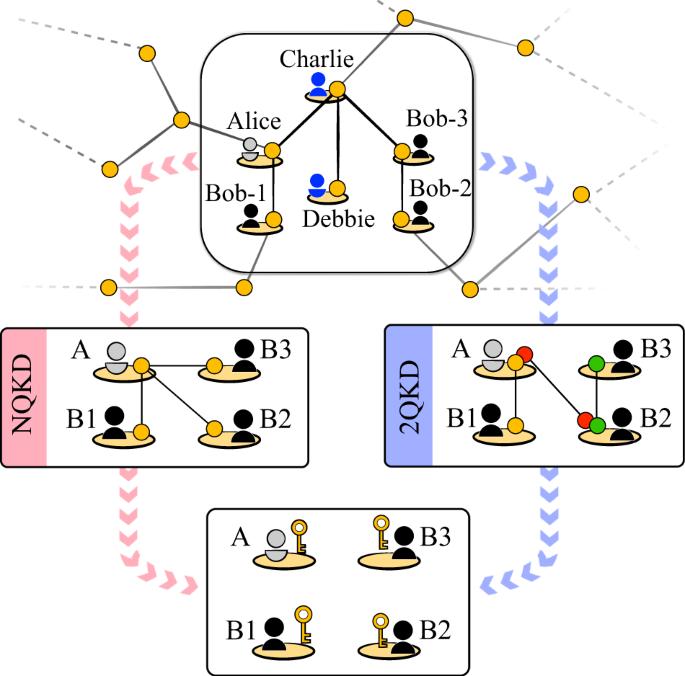ML4Q associated member and Independence Grant Fellow, Frederico Grasselli (Bruss group, HHU Düsseldorf) co-authored a paper which was published a few days ago in npj Quantum Information. The publication is a collaboration with Alexander Pickston, Joseph Ho, Massimiliano Proietti, and others from the EMQL lab in Edinburgh.
In the joint work, the research team experimentally demonstrates the performance advantage provided by multi-partite entanglement for cryptography, in a test-bed consisting of a photonic six-user quantum network.
Abstract: Quantum conference key agreement (QCKA) allows multiple users to establish a secure key from a shared multi-partite entangled state. In a quantum network, this protocol can be efficiently implemented using a single copy of a N-qubit Greenberger-Horne-Zeilinger (GHZ) state to distil a secure N-user conference key bit, whereas up to N-1 entanglement pairs are consumed in the traditional pair-wise protocol. We demonstrate the advantage provided by GHZ states in a testbed consisting of a photonic six-user quantum network, where four users can distil either a GHZ state or the required number of Bell pairs for QCKA using network routing techniques. In the asymptotic limit, we report a more than two-fold enhancement of the conference key rate when comparing the two protocols. We extrapolate our data set to show that the resource advantage for the GHZ protocol persists when taking into account finite-key effects.

Physical qubits are represented by nodes (circles), while edges (lines) represent pair-wise interactions that entangle the qubits within the wider network. Here, we define a network consisting of six users represented by nodes within the rounded rectangle. Within this network, four of the users may wish to perform quantum protocols such as conference key agreement. The traditional method involves distributing Bell pairs among the participants first, followed by post-processing steps to extract keys in a pairwise fashion before arriving at the final conference key as shown by the right path in blue. An alternative approach is to obtain a GHZ state and employ a multi-party quantum conference key agreement protocol to extract the key directly, as represented in the left red path. (Image: Nature/Figure 1 of the publication)
More details: Pickston, A., Ho, J., Ulibarrena, A. et al. Conference key agreement in a quantum network. npj Quantum Inf 9, 82 (2023). https://doi.org/10.1038/s41534-023-00750-4